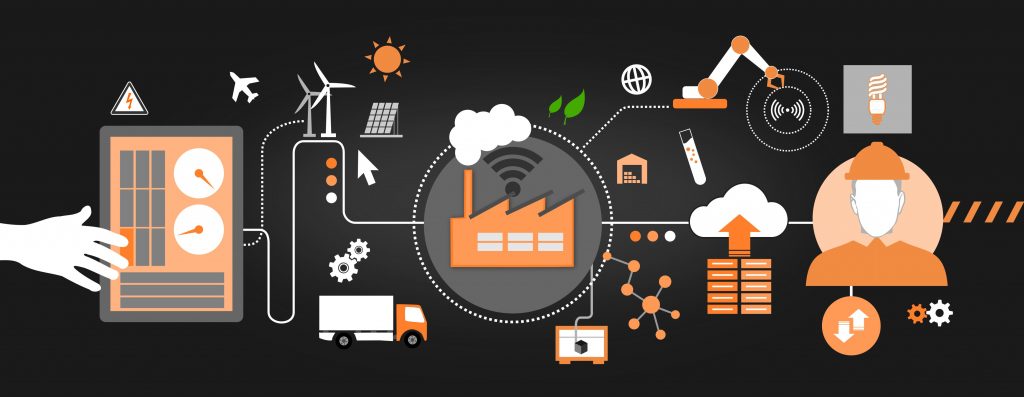7 Ways to Streamline and Automate Your OEM Warehouse
- 1 7 Ways to Streamline and Automate Your OEM Warehouse
- 1.1 Implement RFID tag tracking.
- 1.2 Adopt a unified operations platform.
- 1.3 Automate your backup systems.
- 1.4 Outsource functions to third-party logistics providers where it makes sense.
- 1.5 Explore IoT solutions
- 1.6 Consider the long-term role of physical automation in your warehouse.
- 1.7 Make sure your electronic data interchange (EDI) capacity is keeping up
Warehousing is experiencing a historic boom. Automation is a particularly important factor, as Amazon and other market leaders push a frantic pace of innovation at their facilities. At the same time, the OEM market continues to soar, especially in segments like automotive OEM, which has a market capitalization of well over $1 trillion.
Put those together, and it’s easy to see that we’re in a period of golden opportunity for OEM businesses. Those who successfully invest in warehouse automation now will reap the future benefits of a more streamlined and efficient supply chain. Take note of these seven tips for building a future-ready OEM warehouse that can compete and perform at a higher level.
7 Ways to Streamline and Automate Your OEM Warehouse
Implement RFID tag tracking.
Part pickers usually don’t have time to learn about the finer points of OEM items and rating systems, like whether they need to pull a NEMA 6P enclosure or an IP68 electrical box. That’s why automation has given us many tools to make the process more intuitive and easier to grasp. RFID is among the most effective and flexible of these tools.
The technology is simple and versatile: A tag with a unique radio frequency communicates with a receiver designed to read these frequencies. This flexibility gives RFID diverse applications, such as automatically registering inventory when it moves through a certain point. It can also make inventory counting significantly faster since a receiver often only needs to pass by a tag to register it. In turn, that might even lead to future applications for inventory streamlining, such as drones taking inventory in a large facility via an RFID scanner.
Adopt a unified operations platform.
Many warehouses in the OEM sector and other industries still run on an outdated, patchwork collection of systems. To prepare for the automation of the future, it’s critical that all OEM supply chains adopt unified platforms (typically enterprise software suites) that facilitate smooth interactions between their numerous elements.
More options than ever are available for businesses that want to move to a digitized enterprise platform. Cloud-based and SaaS solutions are top-rated, and the increasing integration of mobile apps into every aspect of daily business has made them almost a must-have for many facilities. At the same time, edge computing is becoming increasingly common in logistics, thanks to its ability to provide computing power on-site.
Automate your backup systems.
Every business today needs data and operations backups, and OEM warehouses are no exception. Automating backup systems can provide significant benefits in that it helps ensure backups are always available when needed. It frees up employees who no longer need to devote numerous personal hours to backup systems.
If you haven’t already automated your system’s data backups, that’s a great place to start. It’s fantastic peace of mind to know all of your business’s most critical data is being continually recorded and that it will be available when you need it—even in a system crash.
Outsource functions to third-party logistics providers where it makes sense.
Outsourcing some warehouse functions to third-party logistics providers (3PLs) makes sense for many OEM businesses. Specific operational tasks (particularly capital-intensive ones like transportation or packaging) are more accessible to hire out to a 3PL that has already made the numerous necessary investments in fleet vehicles, packaging equipment, or whatever other assets they need to provide their service.
3PLs may also have access to automation and other technological resources to improve their operational capacities. When vetting a 3PL, be sure to ask them about their strategy regarding technology and innovation, and consider giving preference to vendors who make it clear they take an innovative and proactive approach to the automated logistics technologies of the future.
Explore IoT solutions
The network of Web-enabled devices we call the Internet of Things (IoT) has a lot to offer an OEM warehouse. These smart devices can track inventory, prevent theft, and automatically reorder low-stock items. When implemented correctly, they allow businesses to use different kinds of data to add new dimensions to their perceptions.
Of course, “implemented correctly” is the part to emphasize. IoT is highly customizable and requires careful implementation, and thus, businesses tend to get the best results from it when they take the time to build a tailored and sustainable IoT solution. Often, the best way to get started is to consider how IoT can help you solve a specific problem, such as mis-pulled orders, and build out from there.
Consider the long-term role of physical automation in your warehouse.
Physical automation is the kind of “hard” automation that uses tools like robots and conveyor belts. It’s the most capital-intensive form of automation so that it can seem out of reach, especially for small and medium businesses. However, with the most prominent industry players increasingly moving in that direction, OEM warehouse owners and managers need to consider physical automation’s role in their facility’s future.
- Again, think about problem-solving—which problems in your facility could be most efficiently solved through automated solutions?
- Could a conveyor belt help reduce the amount pickers have to spend walking a large around the warehouse?
- Could drones help pick parts from high shelves?
These might not be immediate investments, but they should be part of the roadmap that determines how your OEM warehouse allocates resources and plans for the future.
Make sure your electronic data interchange (EDI) capacity is keeping up
EDI, the automated exchange of preformatted data among the parties in a business transaction, is among the must-have warehouse tools of the 21st century. For many businesses, EDI is a fundamental part of keeping up with essential warehouse paperwork like bills of material, bills of lading, and the rest.
OEM warehouses often find EDI plays a particularly large role in their success. With the large numbers of parts that flow through these warehouses and the highly technical nature of their specifications, it’s much easier and faster to let automated EDI software handle the number crunching. It also helps reduce human error, essential in preventing the cascading chains of mistakes that can bedevil modern supply chains.

















